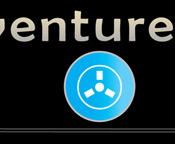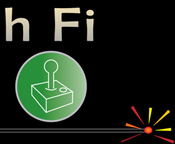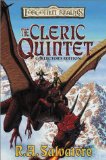Tasmania
In order to get to Tasmania from Melbourne, you must board the ferry of the Spirit of Tasmania. It sails twice a day, once in the morning and once in the evening. We chose the overnight cruise which departs at 8pm or thereabouts and gets into Devonport at around 6am.
The ship is like many other vessels of its kind with bar, restaurant and cinema. The Bass Straight is a large expanse of water and there is not much to tell in terms of visuals on this leg of the journey although it contains over 50 islands and a notorious history for sinking ships in the 19th century. Thankfully our 21st century boat was up to the conditions and we made it accross with only one minor swell rocking the boat and waking me up in the middle of the night.
Devonport isn't anything to write home about, suffice to say it's an industrial port for commerical and private enterprise. Tasmania's largest export is its trees and there have been many major conservation fights over the years to protect vital species from logging and as a result, there are large tracts of land now under protection.
As we had the whole day ahead of us and an unusually early start, we were able to head straight south via Launceston to Cygnet and Huonville in search of seasonal work, mainly fruit-picking. If you pick fruit in a certain postcode area for 3 months, you are granted a second year working visa.
We had seen and read several news stories in the preceeding days and weeks in regards to fruit-picking and that the orchards stated that they were always short of laborours and they would be understaffed as the Government were holding back granting visas to Pacific Islanders. So, easy pickings you might think?
The hard truth, however, is that despite contacting the Fruit Pickers headquarters, individual orchards and work agenencies besides working hostels in the region, there was nothing to be had. One particular orchard manager told me that they needed 20 workers but had a list of 60 on their books. I can only therefore testify that on this occasion, the news reports lied. In one particular hostel, there were at least 20-30 people kicking about waiting to be chosen. They had already been there for many days at least and with a tentative promise of work 'perhaps next week'. We were told it was a first come, first serve basis so with so many already ahead of us, who knows if we would ever get work.
Slighty peturbed by this but unwilling to let it spoil our time in Tasmania, we drove south to Recherche to spend a night on the coast on one of the islands many free camping sites.
It was a bumpy 20km past Ida Bay down an unsealed road but the peace and tranquility was worth the effort as there were few other travellers staying there - mostly retirees who come to fish. There are no facilites besides a drop toilet but you can stay for free up to 4 weeks at a time making it worthwhile if you're looking for a cheap getaway and getting in touch with nature.
After setting up for the evening, we spent the afternoon walking along the road following the beach our camping area.
It is a great feeling having an entire beach to yourself and knowing you are largely in the middle of nowhere and to be doing something that comparatively few people will do.
If that was a fantastic highlight to the day, the coming night was one of the worst of our trip as the area was blasted with torrential rain and howling winds with thunder and lightning thrown in for good measure. Tasmania sits right in the pathway of the notorious "Roaring Forties", the latitudes between 40°S and 50°S, so called because of the boisterous and prevailing westerly winds.
The next morning, the weather was now sporadic grey drizzle and looked like it wasn't going anywhere - a complete turnaround from the beautiful afternoon we had enjoyed the day before. A woman came over from a campervan across the glade from us and offered us coffee - an offer too good to refuse on such a day.
The couple were from Kangeroo Island about 100km south west of Adelaide and Australia's third largest island after Tasmania and Melville island. They were travelling with their grand-daughter who was from the islands south west area although I can't remember the town. They had been travelling from Kangeroo Island on the road for almost a month and had another 4 weeks ahead of them. They were very nice and said to look them up if we were in Kangeroo island.
"Just go into the general store and ask for Tony - they'll know who you mean.". I loved that kind of thing and I hope I'm still exploring the globe at their age.
After a hasty packing of our things, some still wet from the night before, we made our way back towards Hobart, Tasmanias capital city, for a night to recharge our batteries. Phoning around several places before finding a room - we got ourselves a cabin around 10km out. We spent the day sorting through all our things, doing some washing and repacking. I almost enjoy these 'time out' days as much as travelling but we're always eager to get back on the road.
Next on our agenda was Port Arthur, a former convict settlement on the Tasman Peninsula. It is a beautiful location with a dark history. When Tasmania was named Van Dieman's Land, it was a penal colony from 1833 until late 1877. Essentially secured by shark-infested waters on three sides and a 30m wide isthmus of Eaglehawk Neck that connected it to the mainland which was guarded by prison guards and dogs, it was practically unescapeable.
It is a huge historic site that took us 2 days to cover full of ruins and reconstructed buildings as devastating fires tore through the area in 1895 and 1897 gutting the old prison buildings.
In 1996 it was the scene of the worst mass murder event in Australian history when Martin Bryant went on a killing spree, murdering 35 people and wounding 37 more before being captured by Special Operatives Police.
It's strange being a happy tourist enjoying the beauty, tranquility and peacefulness in such a place of historic and recent death and misery. It's interesting that such places can easily absorb such events leaving no trace of malignant foreboding. I'm sure that if it wasn't such an historical penal colony preserved through the effort of those who wanted to keep it against the many Australians that wanted to rid the blight that reminded them of their own history, it would be a sleepy little fishing village and not one of Tasmanias major tourist detainations.
Our next destination was directly east although it required a longer journey to get there because it was accross a bay to freychinet peninsula. The main item of interest was the picturesque Wineglass Bay and the journey to Frechinet National Park was the easy part. The only way to get to it is a pretty tough walk up and down along a narrow, boulder stricken path on a 90 minute trek through a forest. The guide recommends a litre of water per person and at the information centre, it stated a temperature of 27c, so I wasn't taking any chances and brought along a spare bottle.
The walk itself is gruelling in places and because you have little to no clearings to view what is beyond, you have to focus on the goal ahead and convince yourself it's all worthwhile. I would certainly say it was.
It's a beautiful beach that I'm sure lay undiscovered until someone flew over it and informed the Tasmania tourist board. Due to it's remote location and the effort in getting there, it's also not swarming with tourists. The beach itself is white sand stretching in a wineglass formation - a semi-circle - around a beautiful secluded bay.
Unfortunately for us, as we were having a well-earned rest and anticipating a refreshing swim, a shark was spotted in the water. Foolishly enough, two swimmers entered the water and swam around 10 feet out which made the fin weave closer to the beach. That fin turned into two and then three as the veered closer still. As the swimmers beat a hasty retreat to the shoreline, the fins made their way along the bay and towards the other side of the beach. We decided to sit this one out and have lunch instead.
Later that evening we drove further up the coast to St Helens and enjoyed a relaxing evening in a spacious caravan park and had a little spot under a tree to ourselves. I saw two caravan-cum-cabins for sale for $16,000 and pondered who buys these and for what purpose. My own parents have a caravan and use it, weather permitting, frequently during the summer. However, their site is strictly for owners and you would get to know your many neighbours over the years and build up a relationship with them. The majority of the sites in most Australian parks are for tourists and I wonder why you would want to put up with them - here one day, gone the next; friendships made and lost in an evening. Too much trouble for your money if you ask me.
Our last night in Tasmania is in the little coastal town of Wynyard. We have a little cabin room that overlooks the sea and you can hear the waves lapping the beach outside. We took a swim in an inlet earlier in the afternoon and barbequed steaks for dinner.
Our journey on the ferry back to Melbourne was rocky to say the least. The boat swayed back and forth and bounced on the waves all night long. The waves shot up to the height of the ship and the outside doors were shut early into the voyage. With all the bumping and creaking, I didn't sleep too well and can barely remember having quite strange dreams none of which I can recall.
We pulled into the docks on time which says a lot for the capability of the captain and on our journey north we saw quite a lot of devastation with tree branches lying all over the side of the road.
There was many things we didn't get to do in Tasmania (fruit picking being a major one) but there's always another time. For now, it's back to Sydney.
Photos of Port Arthur and Wineglass Bay. Also some Random photos.





















3 Comments:
Enjoyed that little journey with you through Tasmania. It must have been amazing to see those sharks at such close quarters. In you previous blog you were saying you just enjoyed hanging out and I have to agree... while I enjoy visiting castles, cathedrals, mosques, temples or whatever I think some of my most intense memories from travelling have been when I was just sitting in a cafe or bar and soaking up the sense of being somewhere different.
Best wishes to Lou
T
An interesting update on Tasmania!
I know what you mean about feeling a bit weird enjoying a relaxing break in somewhere with such a nasty history. A few years back I was in Auschwitz with a crowd of friends. It was a beautiful sunny afternoon in really picturesque surroundings - if we had been anywhere else we would have taken a picnic. But it would have been difficult to enjoy our sangers with the barracks and crematoria just across the railway tracks...
This was fascinating, Phil- I hope you don't mind if I send the link to my Aunt who lived in Tasmania for six months a couple of years ago, because I am sure she'd be very interested.
So sorry the fruit picking didn't work out- do you have any other options?
Sorry too that you're heading back to Sydney, which I know you find expensive and frustrating!
Love to you both!
Suzy
Post a Comment
<< Home